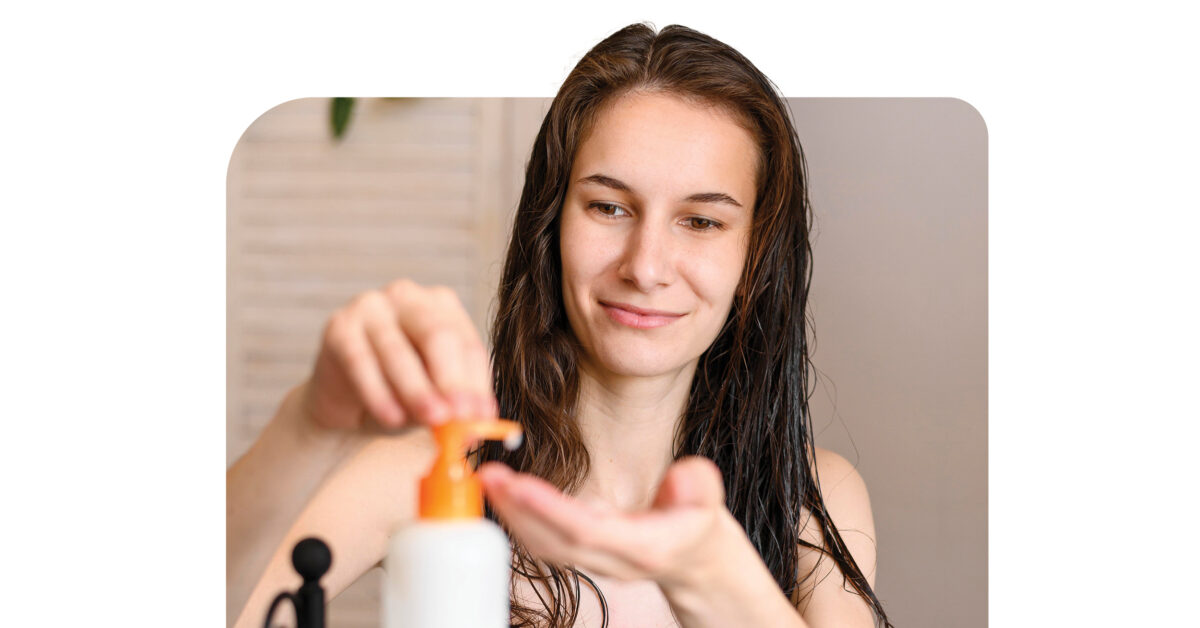
Canfor Announces Plans for $160 Million Lumber Mill Near DeRidder
July 2021
Take a Step Back in Time on the River Parishes Plantation Trail
July 2021Pet owners think of their pets as their “babies” and like “parents,” they believe their pets are positively perfect. And who are we to disagree? In this year’s special section on Pets, we celebrate felines, canines, assorted other companions, and the people who love them. You’ll find stories on how stress affects pets, how to keep your pets healthy in the summer heat, the health benefits of pet ownership, and a story on the Calcasieu Parish Sheriff’s Office canine patrol. While they aren’t considered “pets,” these VIP dogs serve our community and form lasting bonds with their partners.
Health Benefits of Pet Ownership
by Kristy Como Armand
We’re all familiar with the phrase “man’s best friend,” when referring to beloved pets, most specifically dogs, but more and more research is finding that a pet may also be man’s best medicine.
Most pet owners feel having a pet brings an extra level of love and companionship into their lives, but owning a pet has also been found to provide multiple health benefits – both physical and mental.
“There are many health benefits of owning a pet,” says Dr. Andrew Bradberry, family medicine specialist with Imperial Health. “Some are more obvious — having a pet increases opportunities to spend time outdoors, get exercise and socialize. Several studies have found that regular walking or playing with pets can decrease blood pressure, cholesterol levels, and triglyceride levels.”
A research analysis published two years ago in Circulation, a journal of the American Heart Association, found dog ownership was associated with a 24% reduction in dying from any cause. If the person had already suffered a heart attack or stroke, having a dog was even more beneficial; they were 31% less likely to die from cardiovascular disease.
The mental health benefits of pets are also well-documented. Numerous research reports have found that people’s good mood increases and bad mood decreases around pets. For many people, pets can help manage loneliness and depression by providing companionship. The bond between people and their pets has been found to lower stress and anxiety.
Pets help those with Alzheimer’s also. Studies have shown that Alzheimer’s patients have fewer anxious outbursts if there is an animal in the home, and their caregivers also feel less burdened when there is a pet, particularly if it is a cat, which generally requires less care than a dog.
When it comes to allergies, you might be surprised about the benefits pets offer. Dr. Bradberry says the old thinking was that if your family had a pet, the children were more likely to become allergic to the pet, and if you came from an allergy-prone family, pets should be avoided. “However, a growing number of studies have suggested that children growing up in a home with ‘furred animals,’ such as a cat or dog, or on a farm where there are large animals, will have a lower risk of developing allergies and asthma.”
While pets may bring a wide range of potential health benefits, pet ownership may not be right for everyone. “Owning a pet is a serious commitment that comes with certain financial costs and caregiving responsibilities,” says Dr. Bradberry. “The decision to own a pet deserves careful consideration, but if you choose to do so, it’s good to know you may be giving your mental and physical health a boost.”
How Stress Affects Pets
by Kerry Andersen
Attached at the hip is an accurate description of the human and pet dynamic right now. The pandemic and recent storms significantly changed the everyday routine for us, but also for our pets. Often that meant 24/7 togetherness as humans turned to their furry friends to lower stress and anxiety levels. A recent global study revealed a majority of pet owners are worried about how their animals are coping with life changes, upended routines and new norms. There may be cause to worry. Animals absorb what their owners are feeling, so if you are chronically stressed, your dog or cat may be too.
So how do you know if the family pet is stressed? There are some tell tale signs to look for:
- Increased barking or sudden aggression
- Decreased appetite or refusal to eat
- Gastrointestinal changes (diarrhea, vomiting, flatulence)
- Excessive chewing, lip licking, grooming and yawning
- Destructive chewing (shoes, household items)
- Avoiding eye contact or whale eyes (when dogs show the whites of their eyes)
- Hiding – cats can be overwhelmed by having unexpected people around
- Urinating outside of the litter box or other unwelcome bathroom changes
When left unchecked, animal stress can lead to real health ailments. Local veterinarians report a recent spike in stress-related health issues brought on by a variety of potential triggers.
New Home – Dogs and cats who are away from familiar territory can be fearful and anxious.
- When moving, unpack their things first – remember bedding, favorite toys, bowls and treats.
- Set up a safe place for them to retreat if new surroundings get overwhelming. Tuck in a piece of clothing or something that smells like you.
- A long slow walk through the new neighborhood will tire dogs out and allow them to mark and sniff their new territory.
- If the family home looks unfamiliar due to storm damage or repairs, designate a special, familiar spot for pets to regroup. Whether a crate, bed or cat retreat, pets need quiet time too and a place to call their own.
Age-Related Memory Loss and Confusion breed stress. Cats can’t find the litterbox and dogs wander the house looking for familiar places and faces.
- You can help by keeping them mentally engaged with interactive puzzle toys like a snuffle mat or puzzle feeder that offer rewards.
- Aging cats benefit from stimulating views – consider installing a bird feeder outside a window.
- Introducing a new pet may be a traumatic experience for cats, especially older felines, and should be avoided if possible.
Loud Noises like fireworks and thunder increase cortisol levels in animals and are especially traumatic to their sensitive ears.
- Keep them inside where they are safe and monitored.
- Cover your pets’ crate with a blanket for an extra sense of security. Provide a favorite chew toy like a snuffle mat or puzzle feeder for distraction.
- Make sure your pets get plenty of exercise early in the day, so they sleep through loud events.
- Turn on the tv or radio to drown out offending sounds.
Separation Anxiety can be triggered by the passing of a family member or pet, being left alone for the first time after long periods of constant companionship or attending a new boarding facility.
- Ease your way into separation by taking short trips outside your home without your pet as a ‘test run’. You want them to get comfortable with being alone again.
- Visit a new day camp ahead of time so it’s familiar.
- Cats combat stress through environmental enrichment, so increase their play, provide interactive toys and make sure they have places to hide (cat condo).
- Consider hiring a dog walker for consistent exercise. A tired pet will focus on sleep instead of missing you!
You can learn to spot signs of separation anxiety by setting up a camera when you leave so you can understand how your pets behave while you are away.
Effective stress busters
- Vets say daily exercise is the number one way to reduce stress. Play fetch, visit a dog park or take a leisurely scent walk where dogs explore with their noses and you follow their lead.
- Create and stick to a routine with clear expectations; cats particularly thrive with consistent routines and regular mealtimes.
- Soothing scents and sounds really do work; lavender, vanilla and ginger are especially calming for animals. Playing classical or mellow music can slow your pets heart rate.
- Cuddling!
Protect Your Pets in the Summer Heat
by Kristy Como Armand
As the “dog days of summer” begin, it’s important for pet owners to remember that humans are not the only living creatures affected by the Southwest Louisiana heat and humidity. Pets also face increased risk of heat stroke as the temperatures rise in July and August.
“Just like people, pets will naturally seek out methods to cool themselves off during hot weather,” says Dr. Jae H. Chang, veterinarian at Prien Lake Animal Hospital. “If pets are housed outside, it’s important to provide them with the resources to do so, such as a shaded area and an abundant supply of water.”
Pets most susceptible to heat stroke are animals with shortened muzzles such as bulldogs, pugs or Persian cats; overweight pets; those with thicker coats; and those with respiratory problems. Dr. Chang says older animals are also at increased risk. “They are weaker and might experience an adverse response to increased temperatures more quickly than younger dogs. The same goes for kittens and puppies who have not yet reached maturity.”
Heat stroke is a condition that affects other pet species, as well, including rabbits, birds, guinea pigs, ferrets and other small mammals. “Pet owners often think they can bring these pets outside ‘for just a little while to get some sun, but these pets get over-heated and can decline rapidly,” says Dr. Chang.
“All of these little guys are very susceptible to high temperatures. The best place for them during the hot summer is indoors in the air conditioning.”
He says pets will tell you by their actions if they are affected adversely by hot weather, so it is important to recognize the signs of heat exhaustion. If your pet has been out in the heat and exhibits frantic breathing, a bright red tongue, lethargy, vomiting, or staggering, it may be suffering from heat stroke. In severe cases you will notice your pet’s lips begin to turn pale blue or gray.
If you notice any of these symptoms, Dr. Chang says to move the pet into the shade or indoors with air conditioning immediately. “Apply cool – not cold – water to your animal to gradually lower their body temperature and seek immediate veterinary care.”
He offers these additional tips for keeping your pets safe in the summer heat:
Provide access to shade at all times. If possible, try to keep them indoors during the hottest times of the day.Always supply your pet with fresh water and make sure the dish or water bottle is out of the sun. Put ice in their water bowl to keep it cooler longer.
Limit activity when temperatures are high. Walk dogs in the early morning or late hours of the day when the sun is least harsh and bring water along for them.
Walk your dog on grass or dirt to avoid burning their paws on hot pavement.
Pets can get sunburn too. Sunscreen can be used depending on the location of the sensitive skin. Use care in picking the product as cats and dogs are prone to licking themselves and should not ingest most lotions. Only use sunscreens that are specifically labeled for use in dogs and cats. Do not use sunscreen on other types of pets.
Dr. Chang says the most important pet safety rule to remember is to never, ever leave your pet in the car when temperatures are high, even with the windows open. “The number one cause of heat stroke in dogs is being left in a hot car. The internal heat of a car can quickly increase 40 degrees or more above the outside air temperature, especially in direct sunlight. No pet owner should ever take this risk. The best thing for your pet may be to leave them at home.” If you suspect your pet is suffering from heat stroke or exhaustion, contact your veterinarian immediately.
For more information about summer pet care and health concerns, call Prien Lake Animal Hospital at 337-474-1526 or visit www.penlakeanimalhospital.com.
Pups on Patrol
You Don’t Have to be Human to be a Hero.
by Haley Armand Tarasiewicz, photos by Shonda Manuel
K-9 units are an invaluable asset to police departments across the United States, including right here in Calcasieu Parish. The Calcasieu Parish Sheriff’s Office (CPSO) has 11 K-9 officers, with six on patrol, one on the ACT (Anti-Crime and Tactical) Team, one with corrections, one on explosives and two with interstate interdiction (Combined Anti-Drug Task Force CAT Team).
So how does man’s best friend turn into a hero? Calcasieu Parish Sheriff’s Office Sergeant and K-9 Field Supervisor Nathan McKee says these dogs are trained for this line of work. “The CPSO uses an outside vendor to recruit K-9 officers. The dogs begin their training with the vendor when they are puppies and usually come to us around two years of age. Once they are selected for law enforcement, the K-9 and their handler attend a five-week, offsite training camp.”
CPSO looks for specific types of traits and behaviors when selecting dogs for K-9 service: obedience, playfulness, search drive and a good amount of courage. The first step of training is bonding and obedience—both key factors to a successful working relationship.
“Obedience is the basis of all duties,” said Sgt. McKee. “On the handler’s part, they have to understand patience—you are working with a free-thinking animal. The handler must establish a bond of trust and command with the K-9. How we do this is simple. The handler and K-9 spend time together, play fetch, petting, etc. We start with simple commands like you would with your own pets to foster a relationship and build on that foundation.”
CPSO’s dog of choice is the Belgian Malinois breed. The American Kennel Club describes this breed as smart, confident and a world-class worker. They are agile with intense drive and focus, can undertake a variety of tasks, and quickly learn and respond to commands. The K-9 officers with CPSO are either single- or dual-purpose. Single-duty K-9 officers focus on a single purpose like detecting odor for narcotics and explosives. Dual-purpose K-9 officers are trained to not only detect narcotics, but also to track and apprehend people when necessary.
“Our K-9 officers are athletes,” said Sgt. McKee. “Our unit trains together every week as a group, and then individually on each shift. In addition, once a year we complete a week-long maintenance training on all skills.”
To be a K-9 handler, officers must complete the first-time officer program with a supervisor, have three years of patrol experience, perform well under pressure and be physically fit to complete duties, including carrying a 70-pound K-9 officer.
“Our K-9 officers are one of us, part of our team and our families,” said Sgt. McKee. “CPSO provides a kennel and housing for their handler’s property to continue constant bonding and to ensure they are readily available should we be called to duty.”
When it comes to duty, McKee explained how vital these K-9 officers are. Their mere presence alone de-escalates situations and thereby prevents further acts of violence. When that isn’t the case, the K-9 officers will apprehend suspects who officers are unable to control, for them to be taken into custody.
Given their line of work and the athletic abilities they use daily, K-9 officers usually retire around 9-10 years old. But, it can be sooner depending on their health. All K-9 officers receive regular care from a local, certified and licensed veterinarian to ensure their health comes first. When the K-9 officer retires, their handler is given the option to adopt them.
“Our K-9 officers are incredible tools,” said Sgt. McKee. “As much as we think of them as a family member, in the eyes of law enforcement they are our partners and we are grateful to have them by our side.”






